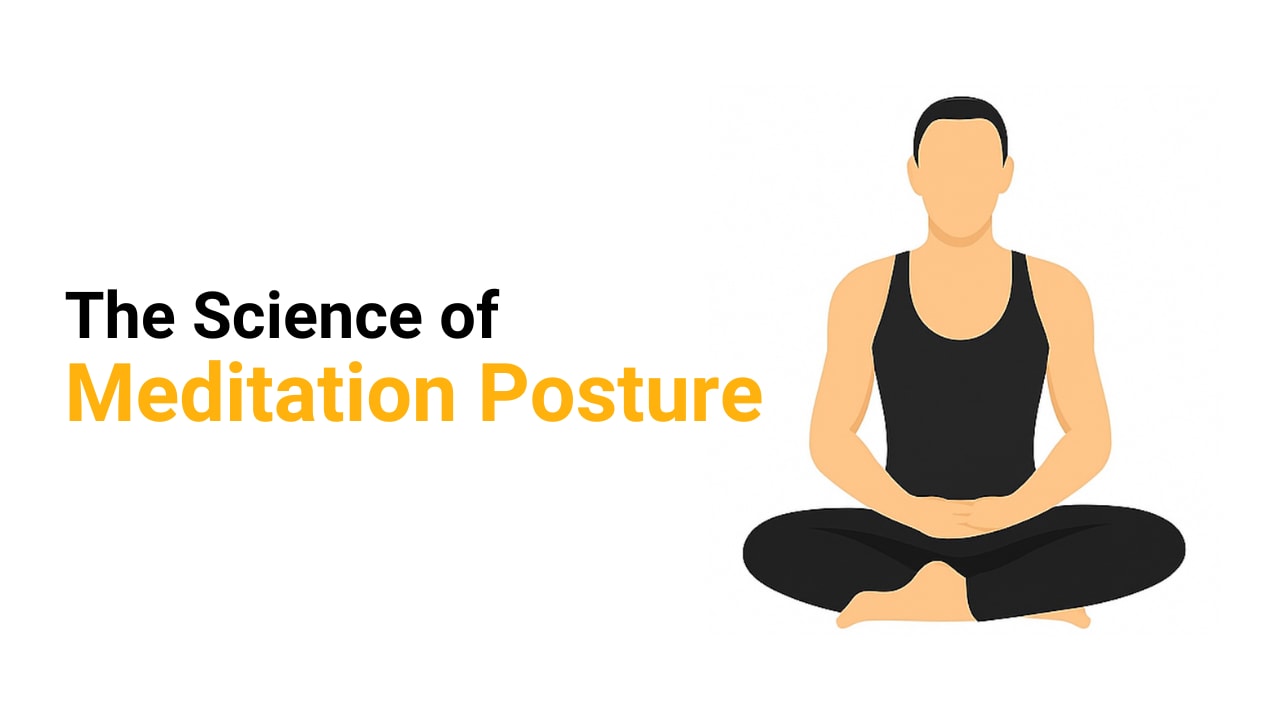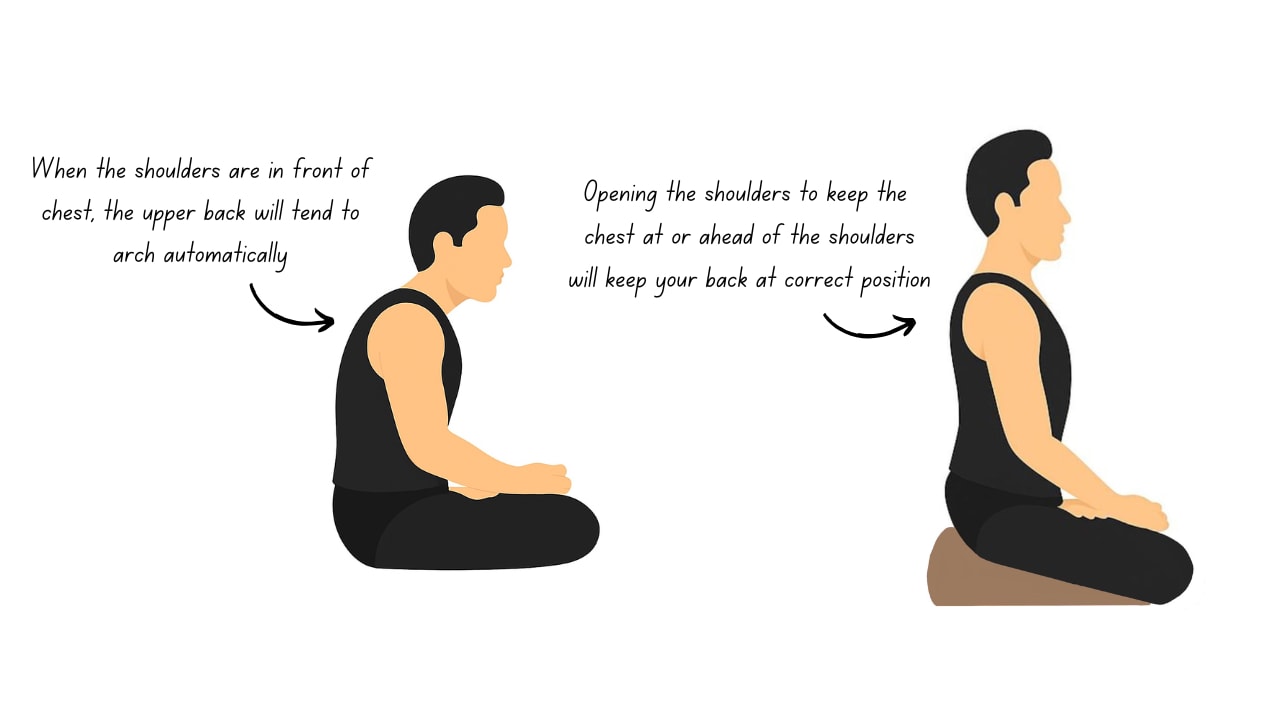The posture we keep our body in does influence our mental state. For example, it is difficult to keep the mind sharp in sleeping posture compared to sitting on a chair. Meditation is no different, having a good posture does influence the sharpness of the mind. Sitting straight with back and neck straight does improve the concentration of the mind (you can try it). However, exerting a lot of muscular energy to maintain that posture makes the mediation experience unpleasent.
During my first 10 day vipassana retreat, I was using a single pillow underneath my buttocks for 3 days and was experiencing pain on my lower back trying to keep my back and neck straight in longer sittings. I decided to add another pillow which would allow my lower back muscles to do less work in supporting my posture, and that did significantly reduce the pain a lot. Over the years my meditation posture improved automatically and I focus more on balancing by body so the weight is not too much on forward/backward direction which will cause my muscles to get tired over longer sittings. In this article I will break down on simple tricks like these which can be used to improve meditation posture and make longer meditation sittings much easier.
When sitting in the cross legged posture, there are different bones and muscles that are working to keep us stable in that posture namely lower back, upper back, hips, tailbone. Understanding how these bones and muscles interact to keep us upright can help us understand how to best position them for easier sitting. Depending on the individual anatomy and flexibility, the best posture can vary from person to person.
When sitting cross legged, our lower back and hamstring muscles are working to maintain the straight position of our back. The lower the angle between the torso and the thigh, the higher these muscles will need to work to keep the upright position, ultimately tiring the muscles over longer sittings. Alternatively, when the angle between the torso and thigh is increased, these muscles have to work lesser and can sustain that position for longer.
The angle between the torso and thigh can be increased by ensuring that your knees are below your hips by adding a cushion below your buttocks. As you keep your knees below the hips, the lower back will automatically form a correct shape. If the cushion has a downward slope, it will support the natural curve of your legs. I typically use two pillows under my buttocks to support my posture.
As your lower back gets in shape by keeping knees below your hips, half of the problem is fixed. You can further improve your posture by opening up your shoulders. If the shoulders are ahead of your chest, it will lead your neck and upper torso to bend towards the ground. Ultimately leading you to also bend your lower back in unhealthy posture.
This can be fixed by simply opening up the shoulders to be at the level of the chest. As you bring your chest slightly forward and move your shoulders slightly backward, the upper back and the neck position will correct itself. However, it shouldn’t be too forward that it requires effort to maintain that posture.
You can slightly tilt your upper torso forward and backward to observe which is best position for your upper torso. The position which require least muscular effort/tension would be the best.
While the above section covers most of the scenarios, there are many nuances that can happen during meditation sitting that I learned along the way which I wanted to share my learnings from.
When meditating for longer sittings, there are often things which can produce a lot of pain when sitting for longer time. One of them is pinching of sharp objects on the body such as your own bones and hard floor. At the beginning of the sitting, the pain caused due to these objects might be minimal. However, when sitting for an hour in adhitthan (forbearance) without changing the posture, can cause excruciating pain after 30 minutes of sitting. It’s just better to avoid these situations from occurring instead of doing a self-competition on how much pain you can tolerate (which isn’t the main aim of meditation). Some of the things to avoid when sitting for longer:
Not sit on hard surfaces like floor or hard cushions, which will cause your bones to pinch on hard surface and cause pain over longer periods. I have seen monks comfortably meditate on hard surface without any cushion. However, I don’t think it should be done unless someone has become comfortable with it.
When overlapping the your legs on top of each other, it is possible to keep one leg on top of a sharp bone of another leg. For example, the Medial malleous (shown below) is positioned underneath your calf muscles. This can be taken care by positioning the legs in a way which avoids such pinching.
If dealing with physical pain during meditation, using back support can be a good way to continue the meditation practice. Using back support does reduce the effectiveness of the meditation. But, better to use it if that gets us to do meditation than to avoid meditation altogether. I typically use back support once I am physically tired of doing meditation.
Numbness is caused due to pinching of the nerves inside the body. Generally stretching and slightly adjusting the position to release the numbness fixes the issue.
Keeping palms closer to the hips will make it very easy to maintain the hand posture during longer sittings. When the palms are closer to the knees, the muscles have to work against gravity to maintain that posture, ultimately tiring your muscles during longer sittings.
This is a new hack I recently learned from a monk. By sitting at the corner of the room where the two walls meet, it makes it easy to sit for longer. The upper back can be supported easily by the walls, making it easy to meditate or rest (if you don’t want to sleep by lying on the bed).
Even after having a good posture, the body will ultimately get tired to maintain that posture after a certain time since there is some amount of energy required to keep our back and neck straight. Prior to that, you may experience intense pain in the body which are associated with some mental activity that would cause discomfort. In those cases, it is better to stretch the body and even walk around for a while to relax your body. Over time the duration for which you can sit for longer will automatically increase with practice.
The Posture of Meditation by Will Johnson (link)
How to Sit in Sitting Meditation (link)
5 Postural Tips For Healthy Seated Meditation by Isabelle Pikörn (link)
The Posture Of Meditation on a Cushion (link)
Effect of different mattress designs on promoting sleep quality, pain reduction, and spinal alignment (link)
.png)







